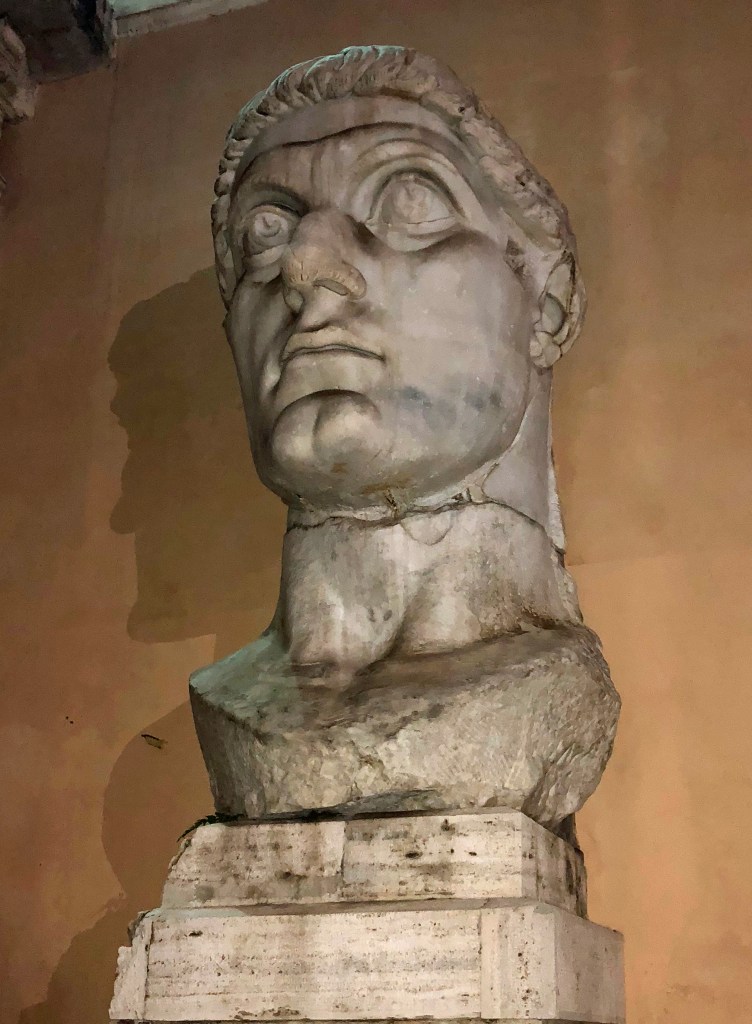
For English version click here.
Im Jahr 321 gerät Köln in die Schlagzeilen des Römischen Imperiums. Am 11. Dezember erlässt Kaiser Konstantin ein Dekret, das den Provinzstädten die Berufung von Juden in den Stadtrat gestattete. Dieses Dekret ist die früheste erhaltene schriftliche Quelle zur Existenz von Juden nördlich der Alpen und begründet zusammen mit den archäologischen Quellen von 2000 Jahren Kölner Stadtgeschichte die Erzählung des zukünftigen MiQua.
Über dieses Gesetz haben die Wissenschaftler*innen des MiQua einen einführenden Text („Das Dekret von 321: Köln, der Kaiser und die jüdische Geschichte“ und als englische Übersetzung „The Decree of 321: Cologne, the Emperor and Jewish History“) veröffentlicht. Er ermöglicht allen Interessierten eine erste Orientierung zum Verständnis dieser einzigartigen Quelle.
Die Handreichung gibt den aktuellen Forschungsstand zum Judentum im 1. Jahrtausend nördlich der Alpen wieder. Die Broschüre erläutert die Bedeutung des Codex Theodosianus, eine spätantike Gesetzessammlung aus dem frühen 5. Jahrhundert, deren älteste Abschrift aus dem 6. Jahrhundert in der Vatikanischen Bibliothek bewahrt wird, und verortet das Dekret in die religiöse Situation im Römischen Reich konstantinischer Zeit. Hervorzuheben sind außerdem die Interpretationsansätze unter Berücksichtigung der archäologischen und schriftlichen Quellen.
Die deutsche Ausgabe (hier) und die englische Übersetzung (hier) können beim MiQua kostenfrei angefordert werden.
Bestelladresse:
MiQua. LVR-Jüdisches Museum im Archäologischen Quartier, Augustinerstr. 10-12, 50667 Köln oder per Mail an: miqua@lvr.de
Lesen Sie zu diesem Thema auch den Artikel Sebastian Ristow, Wissenschaftlicher Referent für die Archäologie des 1. Jahrtausends im MiQua:
Das Jubiläumsjahr 321 und die archäologischen Quellen, in: BlickPunkt.e 01/2021.
Weitere Infos zu der gesamten Ausgabe finden Sie hier.
Ein Beitrag von Michael Jakobs, Referent für Presse- und Öffentlichkeitsarbeit im MiQua.
MiQua and the Decree of the year 321
In the year 321, Cologne hits the headlines of the Roman Empire. On 11th December, the Emperor Constantine issues an decree allowing provincial towns to appoint Jews to the city council. This decree is the earliest written source that we know of on the existence of Jews north of the Alps and, together with the archaeological sources of 2000 years of Cologne’s urban history, it establishes the narrative of the future MiQua.
The MiQua researchers have published an introductory text on this law („Das Dekret von 321: Köln, der Kaiser und die jüdische Geschichte“ and as an English translation „The Decree of 321: Cologne, the Emperor and Jewish History“). It provides all those who are interested with an initial orientation for understanding this unique source.
The publication reflects the current state of research on Judaism in the 1st millennium north of the Alps. The brochure explains the significance of the Codex Theodosianus, a collection of laws from late antiquity from the early 5th century, whose oldest copy from the 6th century is preserved in the Vatican Library, and situates the decree in the religious situation in the Roman Empire of Constantinian times. Also noteworthy are the interpretative approaches, taking into account the archaeological and written sources.
The German edition (here) and the English translation (here) can be requested from MiQua free of charge.
Order address:
MiQua. LVR-Jüdisches Museum im Archäologischen Quartier, Augustinerstr. 10–12, 50667 Köln or by e-mail to: miqua@lvr.de
On this topic, also read the article by Sebastian Ristow, Curator of Archaeology at MiQua:
The Jubilee Year 321 and the Archaeological Sources, in: BlickPunkt.e 01/2021.
More info on the entire issue can be found here (in German).
A contribution by Michael Jakobs, responsible for press and public relations at MiQua.
4 Kommentare Gib deinen ab